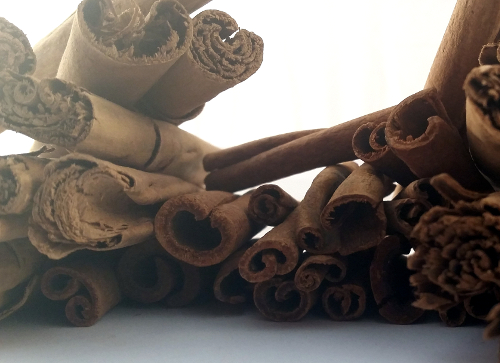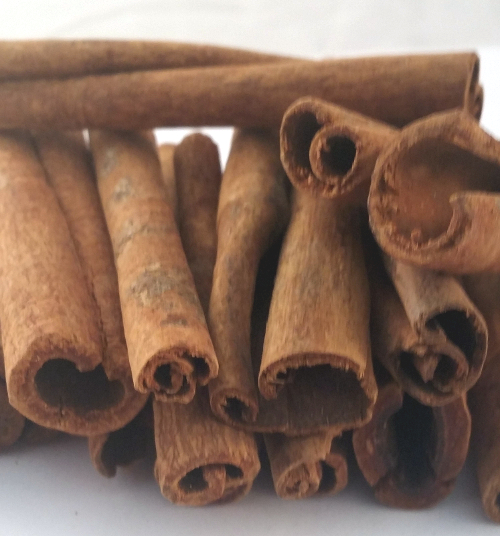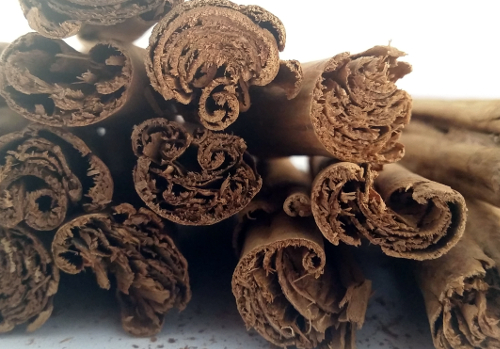
Cooking With Cinnamon, the Most Loved and Misunderstood Spice

While it’s not from America, it is very hard to think of American cuisine and not also think of Cinnamon. Cinnamon is, well, as American as apple pie. In fact, you can’t make an American apple pie without it.
Truth be told – and this is my purpose here – most of the Cinnamon sold in the United States is not true Cinnamon. As Inigo Montoya once said, “Let me ‘splain.”
What You Probably Don’t Know About Cinnamon
By far, the largest percentage of Cinnamon sold in America is actually a spice called Cassia Vera (also called Batavia). It makes up as much as 90% sold in the US, possibly more. The remaining 10% is true Cinnamonyum Zeylancum (also called Cinnamon Ceylon or Seychelle – that’s three names for one spice).
True Cinnamon is native to Sri Lana and also grows in Seychelle Islands. It is highly-valued and has been used throughout history for both medicinal and culinary purposes. This fragrant spice usually harvested from the outer brown bark of Laurel Trees. The distinct taste and smell in Cinnamon comes from the chemical compounds, cinnamic aldehyde and cinnamaldehyde contained in the bark.
Cassia Vera, on the other hand, is native to Myanmar, Bangladesh, Vietnam, India, China and Indonesia – where the famous Mt. Korintji is located. It is from the slopes of Mt. Korintji that the world famous Korintji Cinnamon is grown. Again, it may be called “Cinnamon” but it is actually Cassia Vera.
Cassia vs Ceylon Cinnamon
Telling the difference between Cassia and Ceylon can be challenging. There are no US labeling laws requiring a distinction, and since Cassia is less expensive, that’s what you are likely getting.
Your best bet is to get your powdered product from a reliable source or buy your Cinnamon in quills (also called sticks).
Cassia and Ceylon Cinnamon sticks are distinctly different. True Cinnamon sticks have multiple layers. Cassia sticks have one layer and are generally darker in color. (Forgive the blurriness in this picture.)
Things to Look Out for When Sourcing Cinnamon
I’m not saying Cassia isn’t a quality spice. It could be exactly what you need. Just be sure to look out for a few things…
After the source, the most important thing to look for is the volatile oil (V.O.) content of the Cinnamon. Many varieties on the market are less than 1% V.O. While the Cinnamon I use is upwards of 2.5 – 3..0% V.O., commercially I sell a Saigon Cinnamon (Cassia Vera) with a 4.5-5.0% V.O. Cinnamon prices should rise according to the V.O. content of the ground product.
Both common strains of Cinnamon are often paired with an additive called Coumarin to enhance the smell. Coumarin has been linked to liver damage when ingested in large quantities. Ceylon contains a very low percentage. Cassia can have up to 63 times more than Ceylon!
Comparing Cinnamon Quills, Powder and Oil
Cinnamon quills are rolls of Cinnamon bark. They can be used whole in beverages and other recipes where you steep the sticks. Cinnamon quills can be broken down into smaller pieces and also powdered. Powdering your own Cinnamon, as needed, keeps this spice fresh and potent.
Powder Cinnamon is the result of quills that have been ground with a spice blender. Although Cinnamon powder may save you time, it loses its potency quickly and it is harder to distinguish Ceylon from Cassia.
One little-known fact about Cinnamon is that it has an incredibly small mesh size (300), which means it is ground so fine that it pours and moves like water. When I’m creating Cinnamon spice blends, I often wear a mast or at least hold my breath. Cinnamon induced coughing fits are the real deal!
Cinnamon oil can be harvested from distilling either the leaves or the bark of the tree. Liquid Cinnamon oil is used for a variety of medicinal purposes and also to flavor tea, candy, chewing gum and ice cream.
Cinnamon as Medicine
Cinnamon contains many soothing qualities, is packed full of anti-oxidants and has low-glycemic, anti-septic, anesthetic and anti-inflammatory properties. There’s so many health benefits to Cinnamon there’s no reason you shouldn’t incorporate it into your regular diet.
But, then again, you probably do. Cinnamon and Chile powder are the two most commonly used spices in American homes.
Tips for Cooing with Cinnamon
- In Asian cuisine, Cinnamon is a “hot” spice – as in Five Spice.
- In Western cuisine, Cinnamon is usually a sweet spice – as in apple pie.
- Cinnamon pairs well with Nutmeg, Ginger and Allspice.
- For the freshest results, Cinnamon should be powdered directly before use.
- Use Cinnamon as an ingredient in your favorite desserts.
- Add Cinnamon to any fruit dish for a more exotic taste. Cinnamon goes especially well with apples, pears and apricots.
- Cinnamon is a great addition to your beef and lamb marinades.
- When added to black beans, Cinnamon can put a unique spin on your favorite Mexican dish.
- Don’t forget Cinnamon in your French toast batter!
- Use in mulling spice for either wine or apple cider.
Now that I’ve shared my favorite things about Cinnamon. It’s time for you to share yours. What’s your best recipe that calls for Cinnamon?







I actually have a question …
If I break apart my Cinnamon Supplement and empty in oatmeal while cooking, are the benefits diminished ?
Thanks
Stephanie